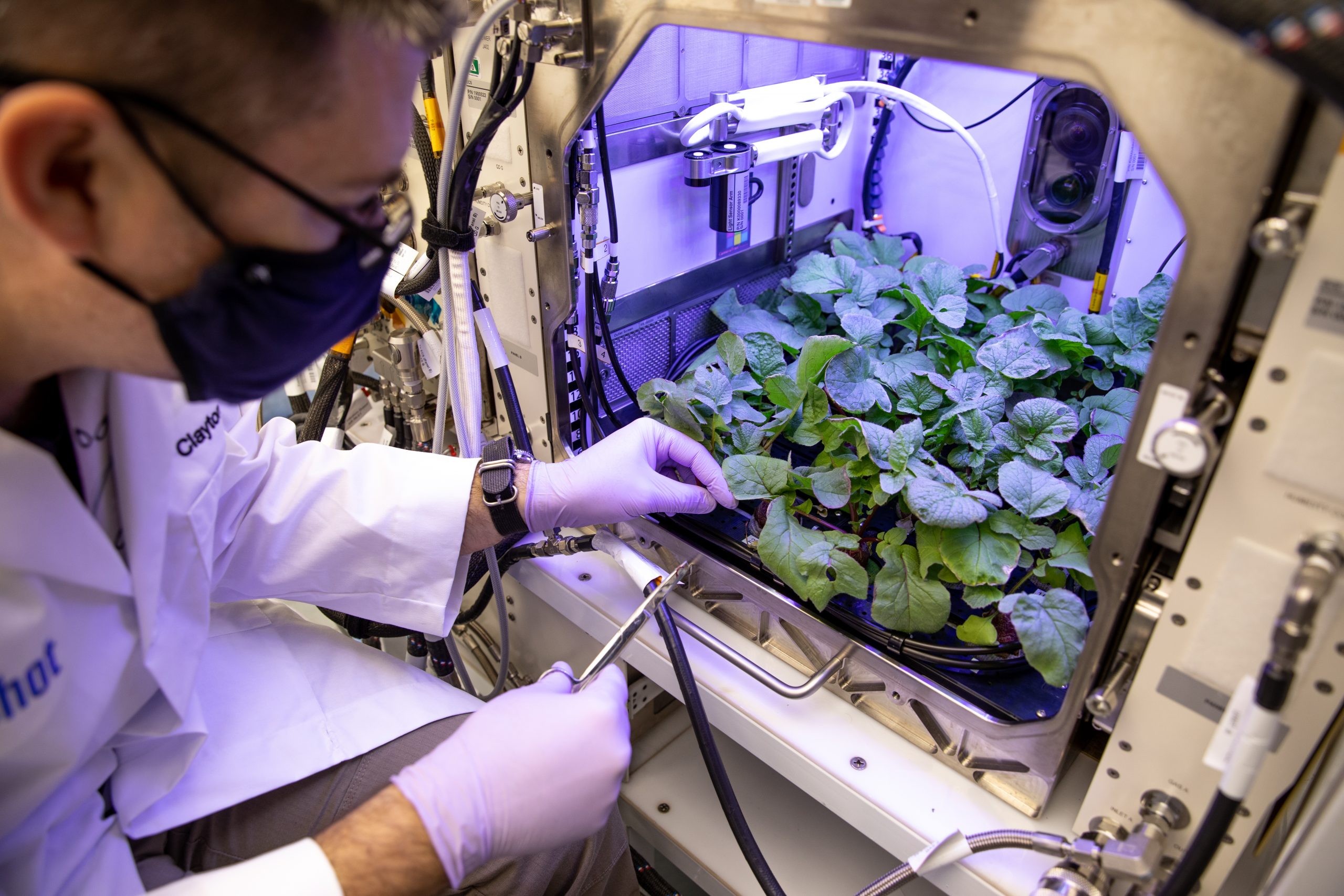
A team of researchers and engineers harvested radishes from the Advanced Plant Habitat (APH) ground unit as part of the Plant Habitat-02 experiment, or PH-02, at NASA’s Kennedy Space Center in Florida on Dec. 14, 2020. This crop was a ground control for a similar crop of radishes grown aboard the International Space Station, which Astronaut Kate Rubins harvested on Nov. 30, 2020. Knowledge gained from the PH-02 experiment will enable astronauts to grow crops that will help sustain crews on long-duration space exploration missions beyond low Earth orbit.
Scientists will compare the results of the ground control experiment to the plants grown in space. The nearly identical growing conditions for both crops will make it possible to identify the effects of the space environment by measuring a range of properties including chlorophyll quantities, enzyme activity, mineral uptake, and several other traits. The major difference is the crops grown on the space station experienced microgravity, an environment vastly different from Earth’s. In microgravity, everything from fluids to flames behave differently.
The space station is a unique laboratory enabling long-duration microgravity experiments that lead to a better understanding of fundamental properties of everything from plants to physics. In space, a second crop of radishes is already growing in the APH on station for the second part of PH-02. Astronauts plan to harvest that crop on Dec. 30, 2020, and send samples back to Earth in 2021 on a SpaceX Commercial Resupply Services mission return flight.
The APH is NASA’s largest and most sophisticated growth chamber designed for plant and bioscience research aboard the space station. It has control systems and more than 180 sensors to deliver precise amounts of water while regulating and monitoring moisture levels, temperature, carbon dioxide concentration, and oxygen content. The APH provides high-intensity red, blue, green, broad spectrum white, and far-red LED light to plants in the chamber. APH’s highly automated data and photo interfaces allow researchers on the ground to access photos and real-time data telemetry while also sending remote commands to the chamber.
To stay updated on this and other Biological and Physical Sciences research, please visit https://science.nasa.gov/biological-physical.
